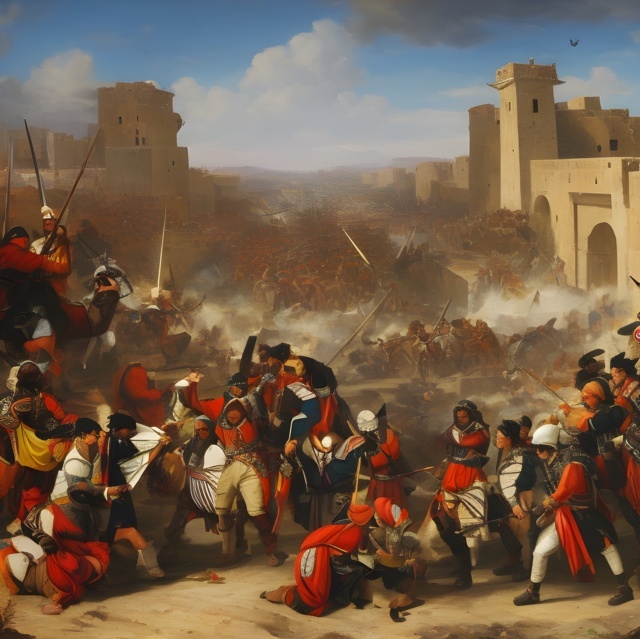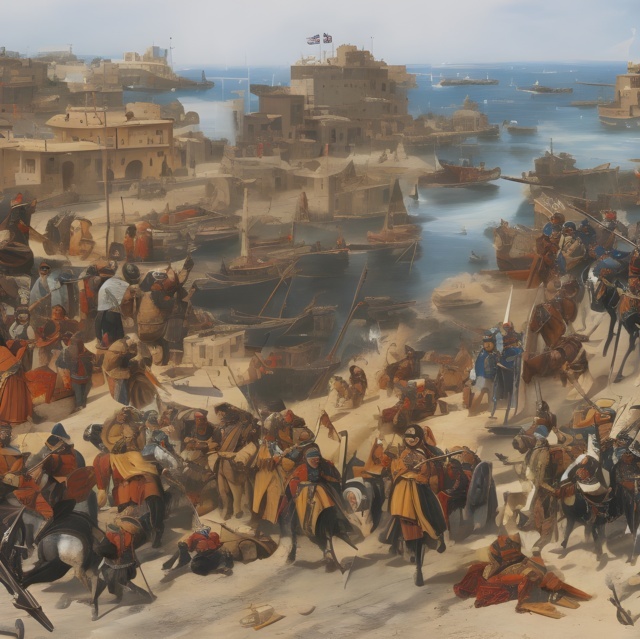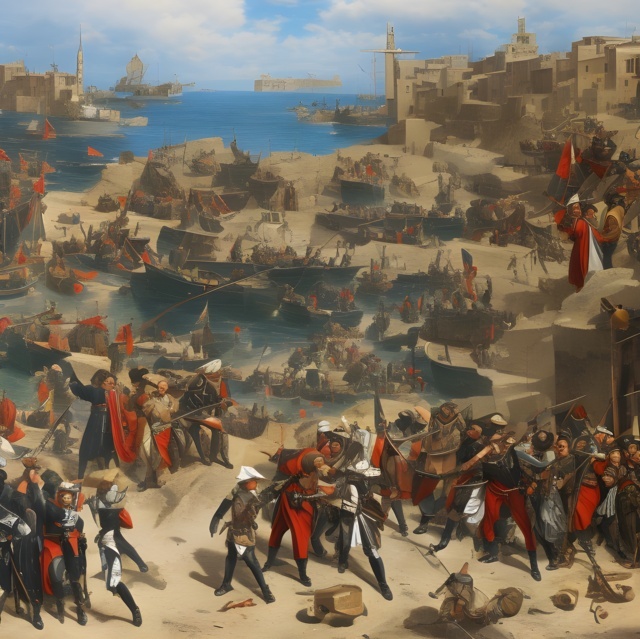A Tale of Power and Destruction.
In the 5th century, the world was in a state of flux. The once-mighty Roman Empire was in decline, and various Germanic tribes were on the move, seeking new lands and opportunities. One such tribe was the Vandals, a Germanic people who would leave an indelible mark on history with their conquest of North Africa in 429.
The Vandals, under their new king Gaiseric, embarked on a daring expedition across the Mediterranean Sea from Hispania to North Africa. Estimated to number around 80,000 people, the Vandals arrived on the shores of North Africa with a thirst for power and a hunger for conquest.
Their initial advance was swift and relentless. The Vandals pushed eastward, conquering the coastal regions of what is now Tunisia and Algeria. The Roman Empire, then ruling North Africa, initially attempted to resist the Vandal onslaught but soon realized that the Vandal army was a force to be reckoned with. In 435, the Romans made a fateful decision to allow the Vandals to settle in the provinces of Numidia and Mauretania, recognizing that they could not defeat the Vandal army.
Aftermath of Conquest
For a few years, there was a semblance of stability as the Vandals established themselves in their new territories. However, their thirst for power was far from quenched. In 439, the Vandals renewed their advance eastward and set their sights on the jewel of North Africa: Carthage. The capture of Carthage was a turning point in the Vandal conquest, as it marked the fall of the most important city in the region.
With Carthage under their control, the Vandals continued their expansion. They conquered the Roman-ruled islands of Mallorca, Sicily, Sardinia, and Corsica in the western Mediterranean, solidifying their dominance in the region. The Vandals had become a formidable force, and their conquests sent shockwaves throughout the Roman Empire.
The Vandal conquest of North Africa had far-reaching consequences. The Vandals, known for their adherence to Arianism, a Christian sect considered heretical by the Roman Catholic Church, brought their religious beliefs to the region. This allowed them to easily align with the Arian population of North Africa and establish their own religious authority.
The impact of the Vandal conquest on North Africa’s economy and administration cannot be understated. The Vandals, like other Germanic invaders, were not necessarily more destructive than their contemporaries, but their establishment had adverse effects. The imperial authorities had to reduce taxes in the Mauretanias by seven-eighths after the devastation caused by the Vandals. Landowners in northern Tunisia were expelled, and their properties were handed over to the Vandals.
Global Response
The Vandal conquest of North Africa did not go unnoticed by the rest of the world. The Roman Emperor Justinian saw North Africa as a crucial piece in his plan to reunite the Roman Empire and destroy the Germanic kingdoms. In the 6th century, he launched a military campaign to reclaim North Africa from the Vandals. However, his attempts were met with limited success, and the Vandals managed to hold on to their territories for several more decades.
Conclusion
The Vandal conquest of North Africa was a pivotal event in the history of the region. It marked the decline of Roman influence and the rise of Germanic powers in Europe. The Vandals left a lasting legacy, both in terms of their religious impact and their political and economic consequences. Their conquests reshaped the map of North Africa and set the stage for future conflicts and power struggles in the region.
References
– Sceviour, M. (n.d.). The Vandal impact on North Africa. Academia.edu. https://www.academia.edu/27135277/The_Vandal_impact_on_North_Africa
– Medievalists.net. (2013, April 14). Settlement and Taxes: the Vandals in North Africa. https://www.medievalists.net/2013/04/settlement-and-taxes-the-vandals-in-north-africa
– Britannica. (2023, June 11). Vandals, Conquest, History – North Africa. https://www.britannica.com/place/North-Africa/The-Vandal-conquest
– Wikipedia. (2012, April 7). Vandal Kingdom. https://en.wikipedia.org/wiki/Vandal_Kingdom
Bibliography
– Heather, P. (2005). The Fall of the Roman Empire: A New History. Oxford University Press.
– Merrills, A. H. (2010). Vandals, Romans and Berbers: New Perspectives on Late Antique North Africa. Ashgate Publishing.
– Merrills, A. H., & Miles, R. (2010). The Vandals. John Wiley & Sons.
– Wolfram, H. (1997). The Roman Empire and Its Germanic Peoples. University of California Press.
Tags
Divi Meetup 2019, San Francisco
Related Articles
Unappreciated Greatness
Life and Legacy of Jahangir of the Mughal Empire. Jahangir ruled over one of the largest empires in human history during his lifetime, yet few people outside of South Asia have heard of him. I aim to shed light on the life and legacy of this remarkable figure,...
The Plague Doctor’s Diary
A Personal Account of the Turin Epidemic of 1656. I am writing this diary to record my experiences and observations as a plague doctor in Turin, the capital of the Duchy of Savoy, during the terrible epidemic that has afflicted this city and its surroundings since the...
The Timeless Beauty of Bustan
Unveiling the Secrets of Saadi Shirazi's Masterpiece.In the realm of Persian literature, few works have captured the essence of love, spirituality, and morality quite like Bustan (The Orchard) by Saadi Shirazi. This 13th-century masterpiece has left a lasting impact...
Stay Up to Date With The Latest News & Updates
Explore
Browse your topics of interest using our keyword list.
Join Our Newsletter
Sign-up to get an overview of our recent articles handpicked by our editors.
Follow Us
Follow our social media accounts to get instant notifications about our newly published articles.









